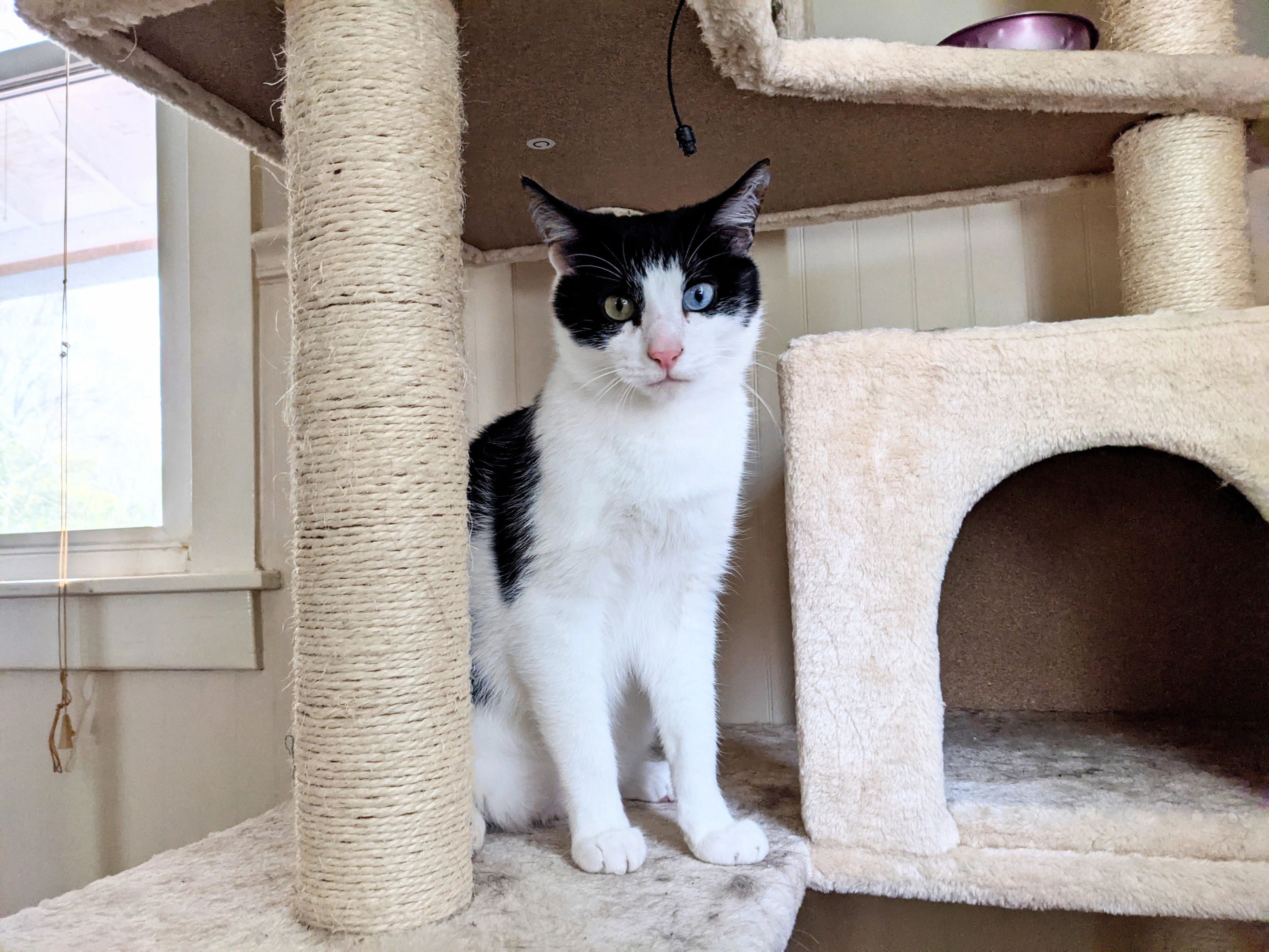
Convict Kitties: How to Combat Door Darting Behavior
Many of us have been there, arms full of groceries, juggling things around to open the door, and suddenly, one of our cats decides it’s the perfect opportunity to make a break for it. Sometimes, they get out and freeze, other times, it becomes a full-blown search. From there, they may forget about it and never bother with the door again…but for many, it becomes a trend; suddenly, this door thing is a game. They’re on high alert, always ready to charge for it and make their great escape. It doesn’t matter if they’re scared once they’re out there or whether they’re having the time of their life, they just want out. Why? Is their home life not good enough? How do we stop it? I’ve got an intermittent door darter myself! Let’s chat about it.
Let’s think about the cat on a broad scale for a moment. These are high energy predators, they may sleep for up to 18 hours a day, but what we don’t often realize is that these are intermittent naps. An outdoor cat would hunt around 20 times a day depending on the prey they’re able to acquire just to meet their caloric requirements. They can be opportunistic as well, killing without eating. They’d have the outdoor environment at their disposal, with so much action and many moving parts, sights, sounds, smells – trees, many varied prey opportunities, countless things to observe, climb, burrow in, focus their attention on to burn energy. When we have indoor cats, you really have to take into account all the things they’re losing and try to compensate the best you can, but even the most concerted effort isn’t going to emulate such an exciting environment. Cats are really very recently domesticated wild animals – we need to treat their environments as we would a tiger in a zoo. We can’t turn our homes into forests, but we can provide climbing areas, plenty of opportunities to exercise, fountains for running water, a carnivorous diet, opportunities to hunt and forage, safe spaces to hide and rest, appropriate areas to eliminate, and so on. Studies show most homes are severely lacking in this area; providing only the minimum in just the mandatory care – boxes, food, stationary toys…sometimes not even scratching area! So often we’re missing aspects, it’s no wonder they want out! The moment you open that door their senses are flooded with so many interesting smells – they look out the windows throughout the day and see the movement out there – squirrels, birds, other cats perhaps, even simply the movement of trees…the world is exciting and gets all of their instincts going! Our homes often just can’t compete. What can we do?
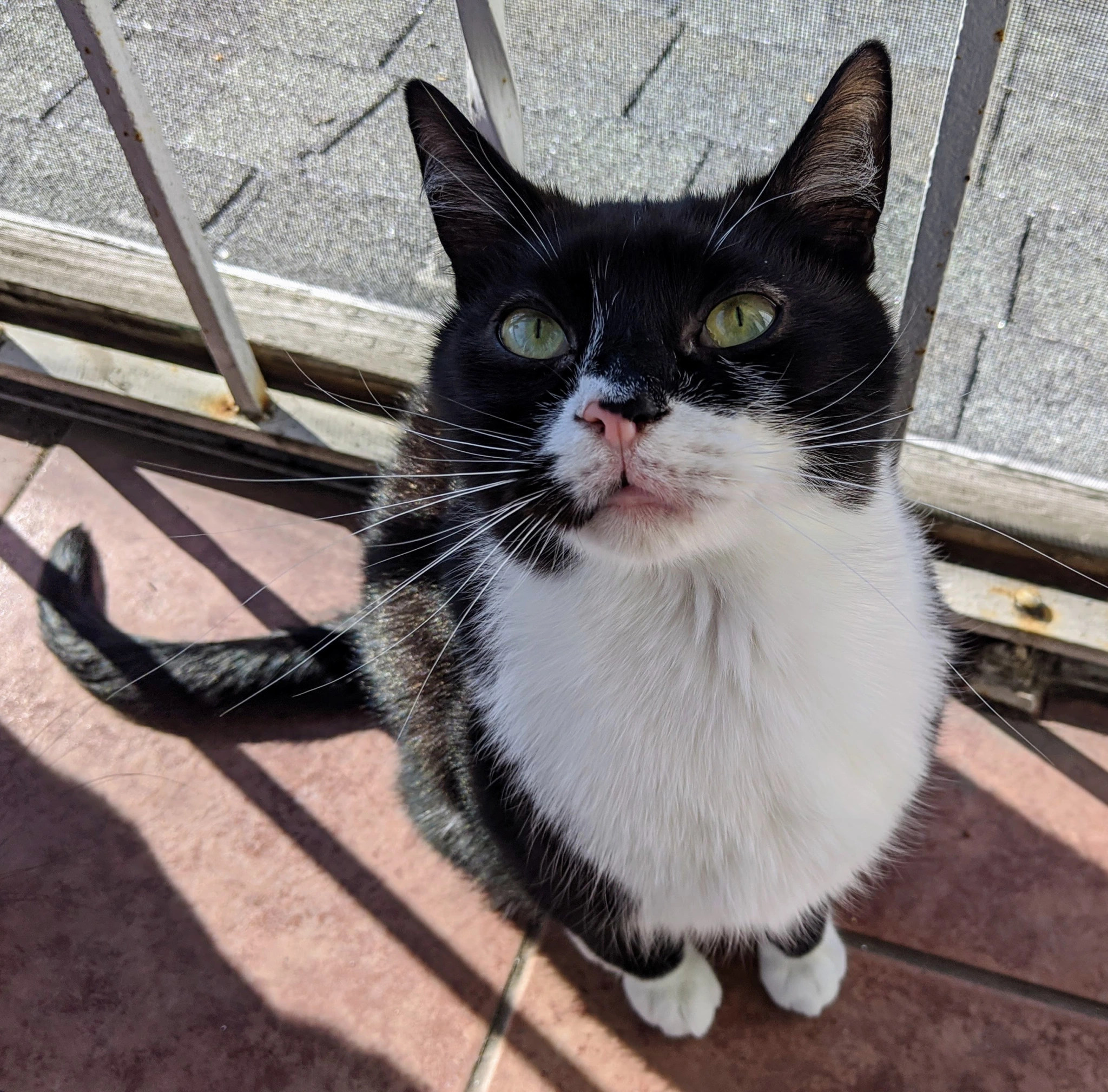
We’ve talked about enrichment ad nauseam here at Caught in the Clowder – but, it really is that important. I’ll try to make it brief, but it’s a big deal for this topic. We need to make our homes exciting for our cats.
Means of Enrichment:
- 1. Provide vertical space. (Trees, shelves, et cetera)
- 2. Provide window space.
- 3. Rotate toys!
- 4. Provide interactive play. Daily. (Not just toys on the floor!)
- 5. Provide a catio if you can!
- 6. Provide puzzle feeders.
- 7. Provide foraging activities (Hide treats around the home or things like snuffle mats!)
- 8. Turn on Cat TV when you can’t keep them entertained or are leaving!
- 9. Provide appropriate scratching area.
- 10. Provide plenty of littering areas.
- 11. Provide multiple areas for drinking – preferably running water!
- 12. Provide catnip, cat grass, cat safe plants for them to enjoy.
- 13. Provide an exercise wheel!
- 14. Clicker train!
- 15. Walk on a harness!
There are so many things you can do – this just scratches the surface!
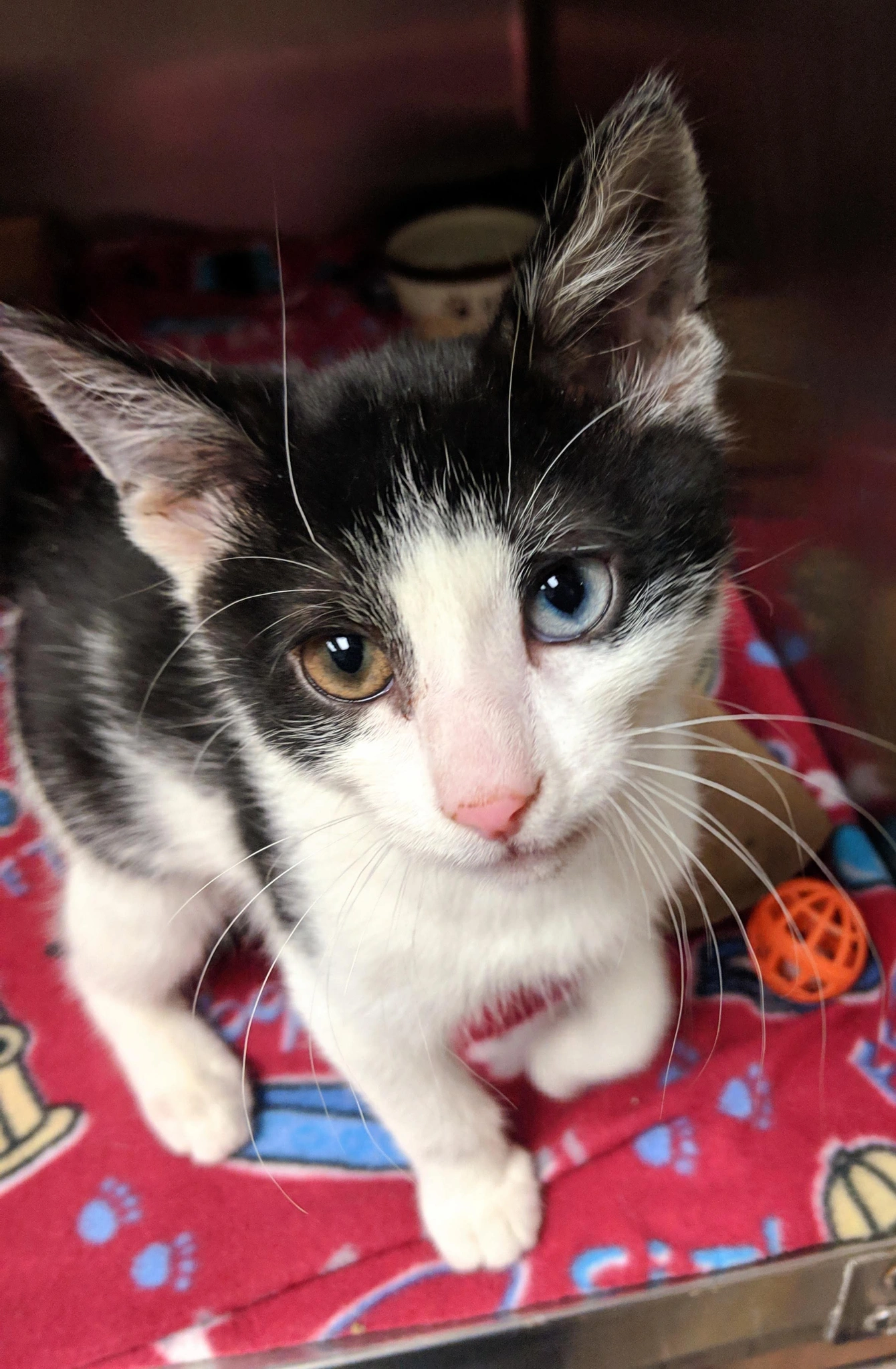
But now, for what you’re really here for – the behavior itself…door darting. How do we treat it?
There are many ways to go about this, and different things will work for different people/cats/homes. I have seen these cases escalate to severe aggression that is only solved by surrendering to an indoor/outdoor lifestyle, but that’s strictly managed, these situations are very special, and usually come with cats who didn’t have a clear history to begin with; they may have been outdoor cats their entire lives, they just so happened to end up friendly, and we adopted them out not knowing any better…over time, their issues with territory and confinement continuing to escalate to a dangerous extent. I’ve also seen them be treated by the simplest of measures – such as just adding a play session into the daily schedule. I’ve seen door darting start simply due to a cat being introduced to the home too quickly and being fearful and insecure in the environment; needing reintroduction. None of this is necessarily one-size-fits-all. But, I’m going to address the “typical” and provide several treatments for it, so that you’re prepared to attack head-on!
First thing’s first, you need to make sure the door is in no way, shape, or form a rewarding place. No excited hellos or dramatic goodbyes there – no yelling or fighting over this behavior, no…anything. Greetings need to be moved to another area – don’t acknowledge the cat until you make it to the other side of the room or another room of the house. Maybe set the greeting/goodbye place to a specific piece of cat furniture, a window, or even just the couch. That’s the first step. If you do this consistently enough the cat may like the praise enough to start stationing at that place when you come and go rather than going for the door – or it might take a bit more than that.
Step two, distraction. We can do this in many different ways.
The first, and possibly easiest for most people is to hang up a container of treats on both the inside and outside of the door – 3m hooks and a Tupperware container with some goodies inside, always ready for the grabbing. Have a few ready to go when entering and exiting (You can also do sessions of this rather than training on the go to really get both your muscle memory going, and build this pattern for the cat when you’re not caught up in hustle and bustle!) As soon as you crack that door, toss treats as far away from it as possible! Start the pattern of treat chasing upon door opening – make that the new association. They may start stationing further away in anticipation of treats coming that way. For a cat that isn’t food motivated, some folks have achieved this with bags of toy mice hanging by the door – toss one in and go!
The next is to station the cat – They may already have this from the greeting and goodbye behavior we built earlier, or you may have to further establish it. Upon entering or before exiting, always beeline straight for the area you want the cat to be in and give them a treat for going there. Alternatively (and potentially more effectively) you can clicker train them to “go to place” and put it on cue. This way, as you enter or before you exit, you can say “Place!” or “Tree!” or whatever word you choose, and the cat should go there and stay there until rewarded and told it’s time to go! We covered stationing lightly in our post Changing Behavior So I won’t go too deep into it here – we’ll re-address it soon in our clicker training post!
Aside from this, you could provide catnip a puzzle feeder, or a battery operated toy before leaving the home – these would keep the cat busy while you’re trying to leave.
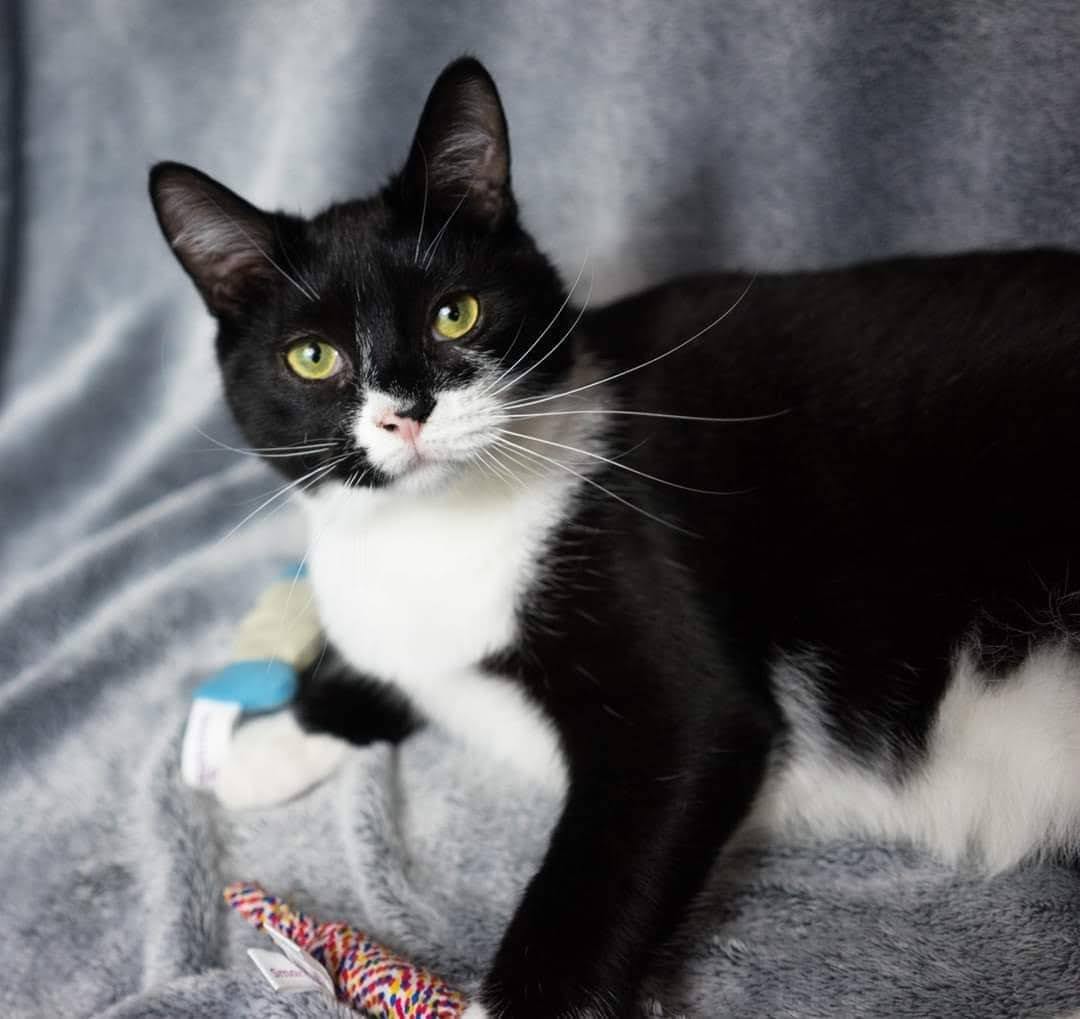
Another means to limiting the desire to go outside – is allowing them constructive, scheduled outside time. It has to be routine and well managed. A catio would take the least maintenance – let them go out and do their thing, there are window units that allow them the freedom to go in and out as they please, too! But then there’s harness training. You never want to walk a cat with a collar and leash – always a well-fitted harness, and there is definitely an adjustment period – they’ll play “Dead fish” and flop to the floor in protest of having to wear the silly thing – but they get over it. Get them used to wearing it, and once they are, start getting into the great outdoors.
Some tips for this include:
- 1. NEVER let the cat walk out on their own. This is a big one – if they’re allowed to stroll out the door on their own feet, this can encourage door darting. They should be carried, or taken out in a carrier, once outside, they can be set down or let out, and the walk can commence.
- 2. Try to walk them at a regular time each day if at all possible, and maybe even set up a cue, specific places for their harness and leash, a specific door that is used to leave specifically for walks – make everything routine so that walks are differentiated from other times you’re leaving.
- 3. Let the cat control the walk. Cats aren’t like dogs and they’re not going to be barelling down the sidewalk…it’s going to be slow, very stop and start…they may lounge around a few times during the course of it until something catches their eye and they’re off again, they may decide it’s time to climb a tree…it’s a goofy experience. But, you’ll know when they’re done.
Following these three tips should prevent increased darting behaviors – it can be a tricky piece of the puzzle in the behavior world – to walk or not to walk – because there have been instances where it has worsened, but, I personally believe the answer is always yes! I think oftentimes there are little errors that lead to the heightened dart response – and they can be remedied.
There are household adjustments that can be made as well, setting up a sort of “airlock” to keep the cat away from the door entirely – or giving you more time to react. For some, this is enclosing an outdoor patio (oh look, it can now be a catio, too! – but for this purpose, it’s an additional barrier – if they get out the front door, they’re not running free, they’re enclosed!), for others they already have a mudroom when entering the door – it’s just not closed off in any way, and that can easily be remedied by the installation of a door, some mild construction, a gate system, or even getting a slat of trellis to lay in a doorway as you go through to block the cat off – (this room shouldn’t be alerted to yet, the door is the sweet spot, so making it able to be closed off makes that door safe.) A hall can be closed off with a baby gate or dog gate (Some have doors the human can pass through, or if your cat isn’t the hurdle jumping type, you may be able to get by with one you step over – Oddly I’ve met a lot of cats who don’t feel like jumping gates.) For those of us who have none of those things, screen doors are sometimes helpful if you don’t already have one – beyond that, you can set up dog pens or another form of barrier you can navigate but the cat may struggle with around the door that provide another hurdle for the cat. It’s not visually appealing, but, it may eventually break the habit and be able to be broken down.

If none of the above are effective and you have a persistent door darter, it may be time to turn to aversive. You all know how I feel about these, but, when it becomes an issue of safety, it’s time to bend. The best for this purpose is the Ssscat compressed air can. You’d set this up by the door, and when the cat comes charging, they get the burst of air and typically go flying the other way. Honestly, the safest way to do this is to have actual sessions. Set it up and immediately go outside of the door, trigger it where you can’t be seen, let the cat run for the door, again, as you can’t be seen. If the cat comes for it as you’re leaving, it runs the risk of them redirecting on your leg rather than associating this negative stimulus with the door itself. This is why aversives kind of suck. Eventually, the cat should stop going near the door altogether. It does seem that the spray bottle is accepted even by those against it in this instance as well – I still don’t love it, but, I see many behaviorists stating that you can use it in the same way – hide behind the door and trigger it, putting the spray bottle in a small enough opening that you can aim but not be seen – spray the cat’s chest as they approach the door, they scatter, and you’re safe, in theory.
Lastly, sticky tape might not be very effective on the floor as that’s where most dirt and debris is, but, you could put down some mats with double sided tape on them by the door before leaving and the cat would get a sticky surprise as they try to escape – likely not loving it, and over time decide it’s not worth it.
Some recommend shock mats, but I will not. Scat mats with plastic spikes may be alright.
You can also lay tin foil down – I don’t have much experience with tin foil being effective for many things, but some do have good luck with it.
Some tips to remember:
- 1. Never pick up your charging cat:
They’re excited, anxious, and this will turn to stress and even aggression quickly. They want out and you’re acting as a barrier to that – they aren’t going to necessarily be logical about it. This is a scrambling moment – it can escalate.
- 2. Avoid blocking them with your hands:
See the above. You don’t want your hands bitten. Blocking with a shoed foot or clothed legs, you have much more protection than your hands will – but even still, your body is not the best barrier. Keeping a Rubbermaid lid, broom, or towel near the door to block with or throw over them would be far safer.
- 3. Never use a deterrent that they can associate with you:
Redirected aggression isn’t fun. You don’t want to deal with it. Trust me.
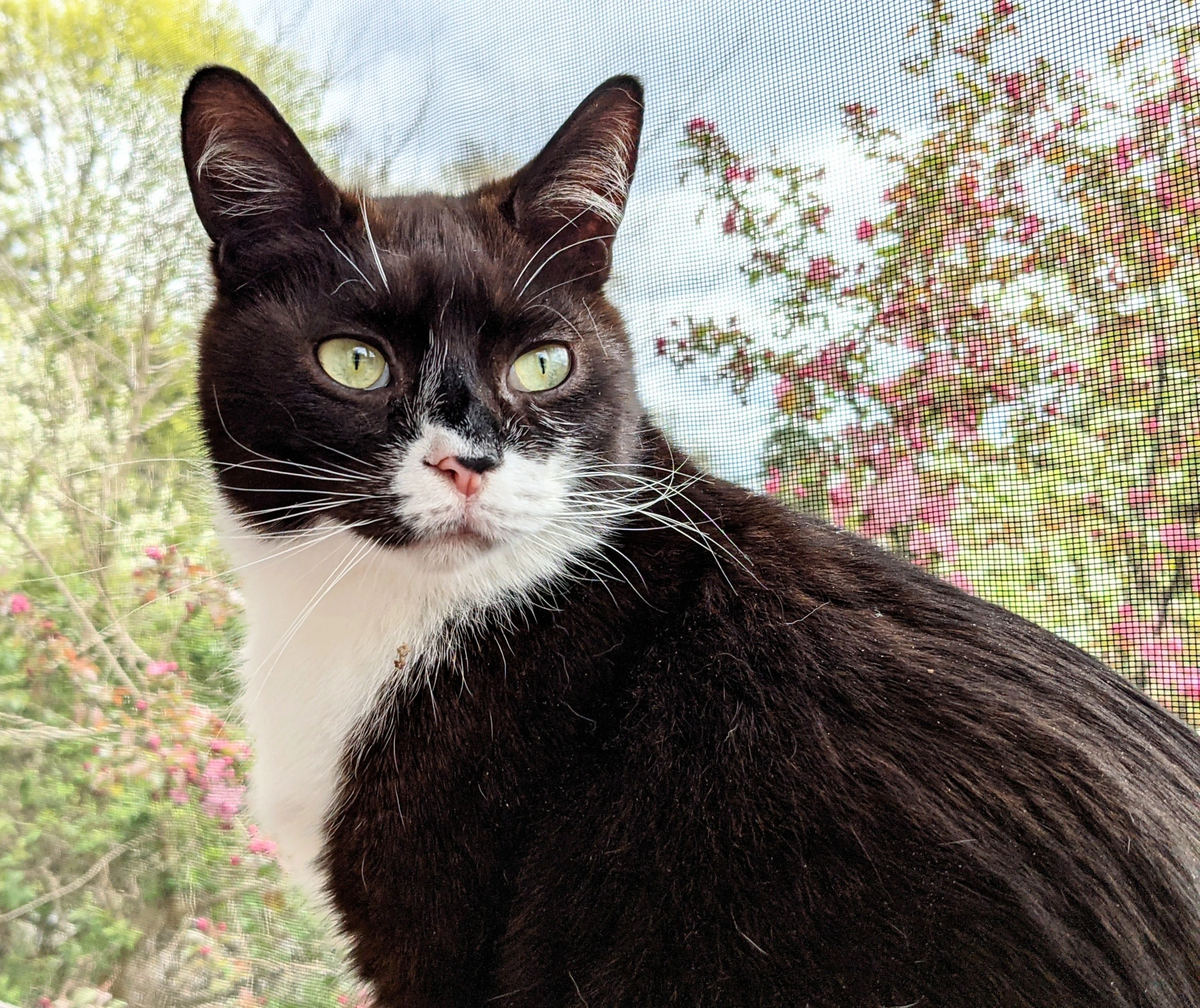
BONUS: Door digging
Someone who voted for this topic mentioned they’d also like to have me talk about door digging...why not include it here!
Cats hate closed doors pretty much universally. It’s some cat code or something. Why? Let’s go back to the beginning of this post. Environment, territory. A cat would have the whole world at the disposal of their little paws, and now they’re confined to the limits of our houses – of which they claim every inch we’ll allow them to. Being closed off to any of it, especially suddenly, is pretty traumatic to them. It’s a threat to their territory, you’re literally ripping some of it away from them. They are territorial by nature.
Second, they’re curious. “I know there’s more back there, what’s going on in there? Why can’t I see it?!” This is only exemplified if you or another animal is in that room – they’re hearing or smelling things and they need to know what’s going on. They are inquisitive by nature.
Third, they love you. They want to be around you, they want your attention – yes, even the more aloof ones, they still want to keep tabs on you even if they aren’t going to lounge on your lap. If you’re locked away in a room that they can’t be in, they feel they’re missing out. They may feel they’re being punished – sometimes, it almost seems they’re concerned! (My cats often scream bloody murder when I get out of the shower and are extra affectionate – same follows in the rare occasion that I close any other door.) They are social by nature.
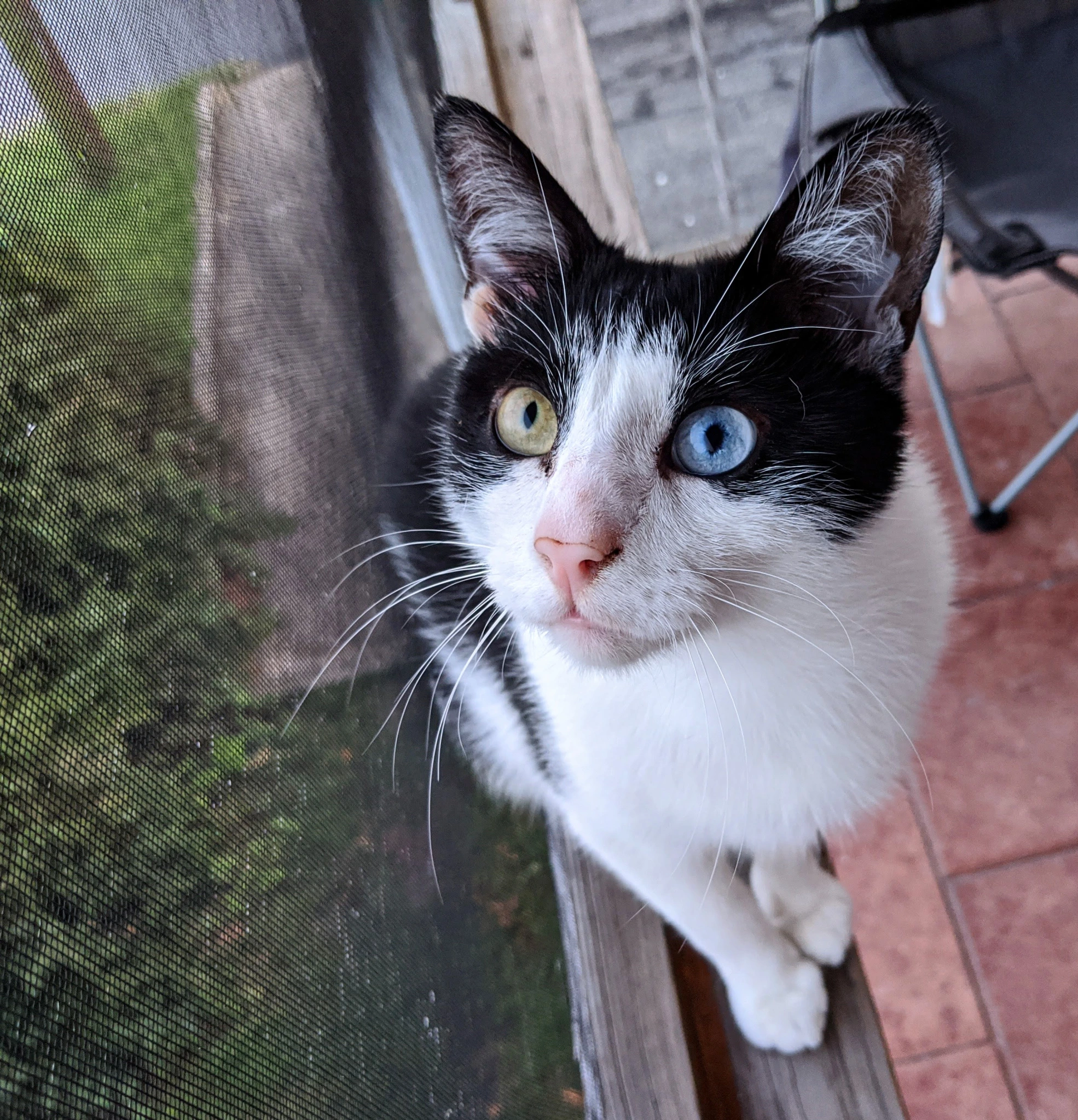
“Okay, I get that…but they’re tearing up my carpet! I don’t even own this house…what can I do about it?!”
First and foremost my question would be: Why are you closing the door? Yeah, really. I don’t often hear of them doing this to a front or back door – when they do it’s often a sign of a bigger issue (animal outside) More often when this is happening, it’s an interior door, often a bedroom that’s being shut at night. Sometimes I’d say it’s easier to leave it open and address the reason why you’re wanting to lock the cat out. Often the reasons are silly, sometimes they’re reasonable but more often than not, workable.
One interesting one that I did see was a matter of anxiety – someone who didn’t want the cat out and was somewhat upset that they had to lock them out but could only sleep with their door shut due to anxiety, and it did kind of make me sad. I’ll throw in a few thoughts here. Maybe bring cat items in and let the cat be with you overnight. (They may in-turn want out, the closed door being the sole issue...but sometimes they’re happy enough to be in the room with you, it could be a trial run.) Maybe install a cat door (if you own the property or can replace the door later), would a gate provide security as a door does? They make gates with openings just big enough for a cat – tall dog gates with little cat doors! There’s also the Door Buddy – it’s a strap with a stop that does not allow the door to be closed or opened – it’s left sitting with just enough space for the cat to come and go until you unlatch it. Perhaps one of these might help in a situation like this?

If the cat being in the room is just not an option, I would recommend a few things, not too different from the door darting advice, honestly:
- 1. Enrich the environment – make the house exciting, make the door less interesting.
- 2. If the door is being closed only overnight or at specific times, schedule playtime and a feeding before closing the area off. Turn on Cat TV and some battery-operated or motion-activated toys during these hours – perhaps get a timed feeder or treat dispenser to pull their attention away several hours into it being closed if you happen to be inside that room.
- 3. Ignore them. For real, ignore them. This behavior is repeating for a reason, they’re getting some satisfaction from it, and usually that’s attention. Do you yell at them or tell them it’s okay? Give up and open the door? Get up and feed or play with them? Get up and spray them or relocate them? Any of these things, even the negative ones, count as attention – and even if they’re getting sprayed, they’re still getting interacted with and sometimes, that’s enough to reinforce. “That kind of sucked, but, at least mom came out to me…” – Kids pull this kind of stuff, too – acting out badly and getting into trouble when they’re not getting enough attention because even the bad is better than none. If you truly stick it out and ignore the behavior it should eventually stop because they are getting nothing from it.
- 4. Aversives can be used in the form of Ssscat cans – but if you’re not trying to make them avoid this area altogether, that would be ill-advised. You can also use double-sided tape strips on the door, trim, and/or floor/carpeting (Or mats on top of the floor/carpeting) to make them at least stop the digging. (Sometimes they are so desperate that they will continue to claw through, since this is not a “fun” behavior, it’s a stress-related one) You can get plastic “protector” mats to slide under the door (that sometimes act as deterrents too, cats don’t like slippery!) and try “No scratch” products – but again, this isn’t purely a scratching behavior.)
- 5. Calming products such as Feliway, CBD, or even something like Gabapentin from your vet may assist in breaking this behavior or simply calming the cat a bit during this time.
I think that's about it for this one. This weeks photos were of my cats! Bernard, the boy with two different colored eyes id my escape artist. occasionally deciding he’s obsessed with the front door (Usually when it’s too cold for the catio to be open!) You're not alone!
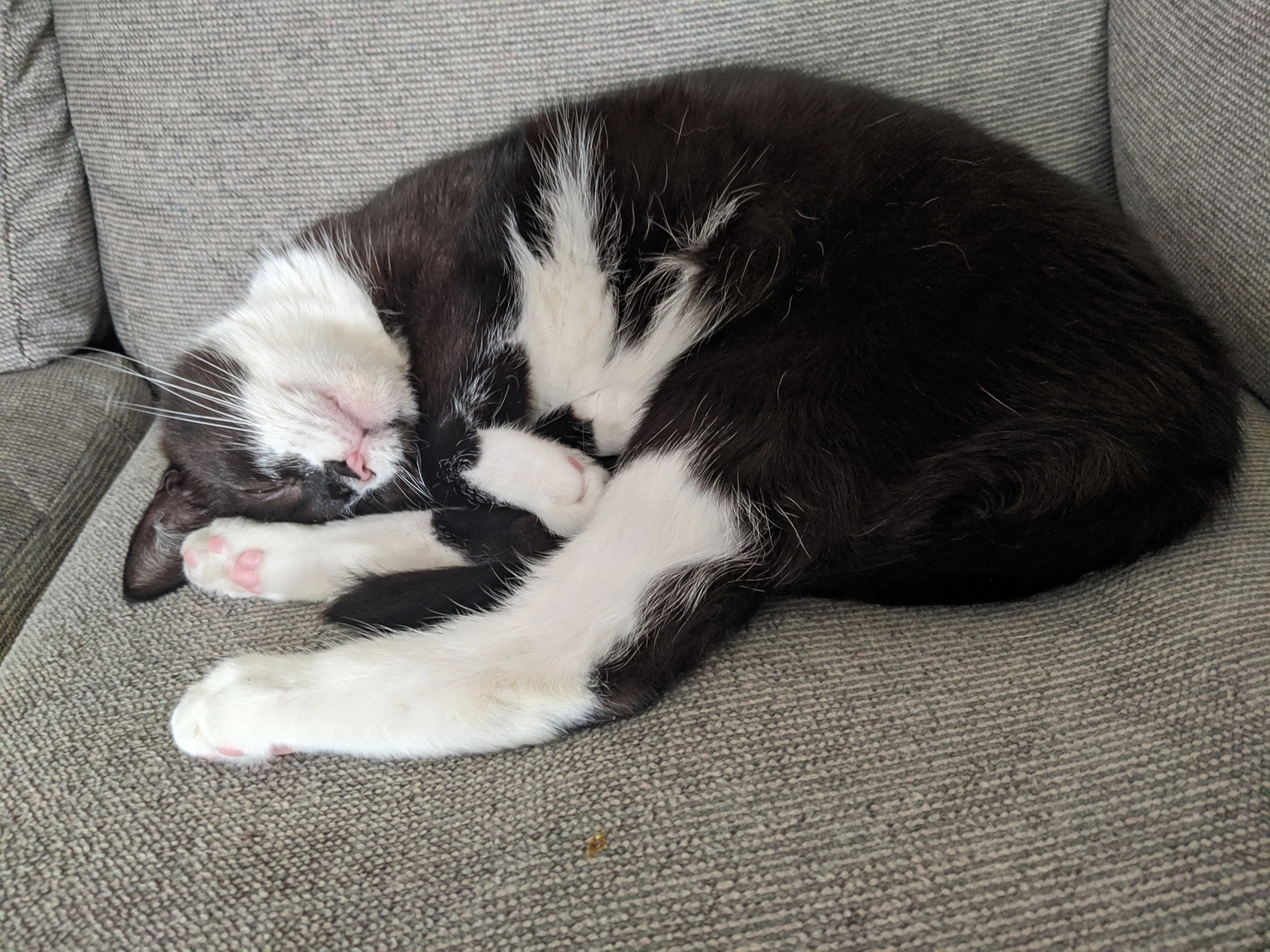
Until next time.
-Meg
